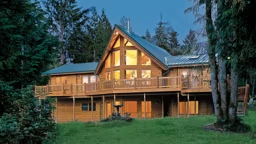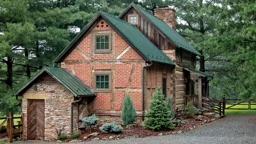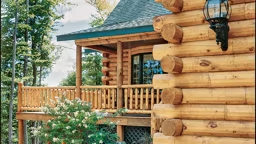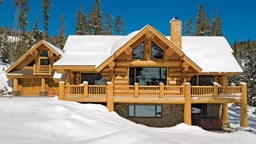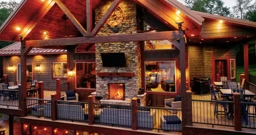
Photo: Ryan Stone via Unsplash
A log cabin kit is the perfect solution for anyone who wants to have some input into building their log home but doesn’t want to DIY or self-build a log home from scratch. Perhaps you don’t have the time to cut, peel and notch logs, or you feel you don’t have enough experience and carpentry skills. A kit can be a perfect solution to all of those dilemmas and making it easier to take some ownership over the build and simplifying the process at the same time.
Kits are becoming more and more popular in the US; over 30,000 kits are manufactured each and every year. So, how do you know which kit is right for you?
These are 3 important considerations when it comes to choosing your log cabin kit:
- The different types of kits available (wood types, notch types and finishes)
- How to choose a manufacturer for your kit
- What is included with a log cabin kit and the total build cost
1. The Different Types of Kits Available
There is a huge variety in the type of kits available to purchase, from the type of wood you choose (e.g. pine or cedar), to how the logs are milled and finished (e.g. D-Logs or half-logs) to the notch type (e.g. scandinavian saddle notch or dovetail).First you will need to decide whether you prefer milled or bespoke logs, do you prefer uniform logs, all of the same shape and size, or do you like seeing the natural characteristics of the logs?
Then you will need to consider the wood type you want. There are over 800 species of trees in the US but only around two dozen of them are used to build cabins. The most widely available choices are: pine, white cedar, cypress and spruce. Cedar is often considered the most premium wood and so therefore comes with a higher price tag.
The next step is choosing the notch (i.e. corner join), the most common is the saddle notch, but other choices include a dovetail notch, butt and pass notch, corner post and tongue and groove.
You may not have a choice on how the logs are dried depending upon the manufacturer. Some companies only offer kiln dried logs which speeds up the drying process. Others are dried naturally over a longer period of time.
All of these components will provide you with different characteristics for your log home. For example, a milled saddle notch pine kit will vary in appearance from a bespoke cedar dovetail log home.
2. How to Choose a Manufacturer?
With over 300 companies to choose from in the US, how do you choose the right one?
There are three important factors to consider when choosing a supplier:
- Are they registered with an appropriate log home association?
- Do they offer on-site assistance or an installation service?
- Are the logs and plans graded and stamped?
With regards to the on-site assistance or installation service, this might not be something that you need, however, the very fact that they offer this service is a good indication that the kits they create are good quality.
You should also check that the kit comes with a guarantee, at a bare minimum you can expect a 10-year guarantee from a reputable company.
3. What is included with a log cabin kit and the total build cost
Most kits include the log wall system, the roof and the windows and doors. In addition to that, you will need to source the foundation, floors and interior finishes. Companies usually offer kits based on different levels on completion, the three main ones are:- Shell only
- Dry-in package
- Turn-key (i.e. complete) package
A shell only package typically only includes the logs and you can expect to pay in between $50-$80 per square foot for a kit.
A dry-in package includes everything from the shell only package and all of the components required to finish the exterior of the cabin. This kit costs around $70-$139 per square foot. A turn-key package includes everything you need to complete your cabin to be move-in ready. The cost of this package can range in between $130-$180 per square foot.
The package you choose will mostly depend on your budget, the amount of time you want to put into the build and which building technique visually appeals to you the most.
You now know how to choose the very best log cabin kit, good luck with your venture.
See also Understanding Log Home Kits
David Woods is a carpenter, outdoorsman, and author with more than 30 years of professional woodworking experience. He created Log Cabin Hub to educate people on the process of buying and building log homes.




